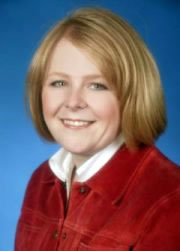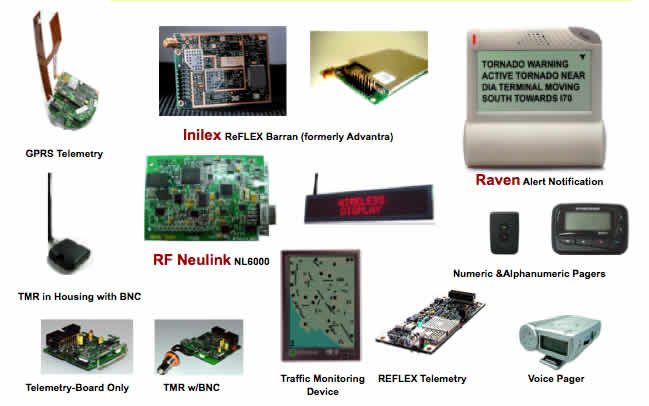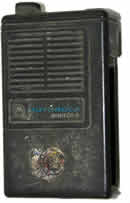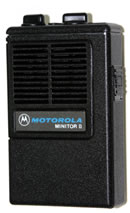BloostonLaw Telecom Update Published by the Law Offices of Blooston, Mordkofsky, Dickens, Duffy & Prendergast, LLP [Selected portions reproduced here with the firm's permission.] www.bloostonlaw.com | | Vol. 12, No. 21 | May 27, 2009 |
Senate Commerce Panel Approves Strickling For Top NTIA Post The Senate Commerce Committee has unanimously confirmed Lawrence E. Strickling
as Assistant Secretary for Communications
and Information, Department of Commerce,
and Administrator of the National
Telecommunications and Information
Administration (NTIA). The next
step is a vote on the Senate floor.
The Committee also approved Aneesh Chopra to be the first Chief Technology Officer (CTO). He is currently Secretary of Technology under Virginia Governor Tim Kaine (D). Prior to joining the Kaine administration, Chopra was managing director at the Advisory Board Company, a health care research firm. CYBERSECURITY CZAR Later this week, President Obama is expected to announce his intention to appoint a “Cybersecurity Czar” with broad authority to oversee government and private computer networks, according to the Washington Post. According to the Post, this new Cybersecurity Czar will fall under the umbrella of the National Security Council and the National Security Adviser, as well as the Senior Economic Adviser. Hence, the Cyber Czar will be “locked” into the White House. We will have to await further details to evaluate the significance of this position. BloostonLaw contacts: Hal Mordkofsky, Ben Dickens, Gerry Duffy, and John Prendergast. |
INSIDE THIS ISSUE - NTIA delays broadband grant awards until 4Q ’09.
- Senate Commerce panel approves Strickling for top NTIA post.
- FCC reminds manufacturers to file HAC compliance reports.
- FCC’s DTV “soft test” draws record number of consumer calls.
- VITAL MEETINGS & DEADLINES
|
NTIA Delays Broadband Grant Awards Until 4Q ‘09 In its May 18 status report to Congress, the National Telecommunication and Information Administration (NTIA) quietly delayed administering $4.7 billion in broadband stimulus grants until the fourth quarter. In the report, NTIA noted that it will accept grant applications in September and aims to distribute its first grants in December. However, in a meeting last March, it had said it hoped to accept grants in April and May and start delivering the first round of funding in June. The delay is not a problem for most of the entities hoping to obtain grant money, as the rules that will govern the distribution of the funds and set the guidelines and priorities for NTIA have not been announced. In fact, the delay may prove beneficial in that it will provide more time for entities to develop business plans. NTIA currently intends to conduct three rounds of grants. NTIA’s goal is to open the first grant application window in the summer of 2009, following publication of a Notice of Funds Availability (NOFA) that will establish more specific eligibility criteria and funding conditions in accordance with the Act’s requirements. After its review of the initial grant applications, NTIA anticipates making grant awards beginning in the final quarter of calendar year 2009. Two more rounds of grants will follow, each commencing with its own NOFA that will allow NTIA to make any appropriate changes to the program based on its previous experience. In addition, NTIA intends to release a separate NOFA with respect to the broadband map. GRANT PROGRAM PHASES AND ANTICIPATED MILESTONES: (Statutory deadlines are in italics) Phase 1: Program Design February – June 2009 Initial consultation with Federal agencies, States, and other governmental entities — February – June 2009
Phase 2: Program Implementation June 2009 – September 2012 Issuance of Notice of Funds Availability (Mapping) — Early Summer 2009 Issuance of Notice of Funds Availability (General) — Early Summer 2009 Outreach and Grant Guidance Workshops Summer 2009 Submission of Grant Applications — July 2009 – September 2009 Initial Grant Awards — Fourth Quarter 2009 Second and Third Notices of Funds Availability (General) — 2010 Completion of Grant Awards — September 30, 2010 Broadband Map Posted to Website — February 17, 2011 Substantial Completion of all Grant Projects — September 30, 2012
Phase 3: Final Program Audits and Shut-down — September 30, 2014 Public comments received at the public meetings, as well as those provided in response to the RFI, will inform the policy decisions in the NOFA. Among other things, the NOFA will open the window for grant applications; define the applicable statutory terms, including •broadband, •unserved, and •underserved; establish additional eligibility and selection criteria in accordance with the American Recovery and Reinvestment Act; and specify the progress and reporting obligations of grantees as well as the monitoring and audit role of NTIA. At the same time, NTIA will issue the non-discrimination and interconnection obligations that will be conditions of the broad- band grants. NTIA has been consulting with the States and the FCC to ensure that the criteria and conditions set forth in the NOFA will further the purposes of the Broad- band Technology Opportunities Program (BTOP) as set forth in the Act. Apart from the BTOP grant program, the Act directs NTIA to develop and maintain a nationwide broadband map for use by policymakers and consumers. NTIA is working with the FCC and the Rural Utilities Service (RUS) on the mapping initiative. The Act sets aside up to $350 million to fund the Broadband Data Improvement Act’s State Broadband Data and Development Grant Program and the development of the map, which will depict the geo- graphic extent to which broadband service capability is deployed and available throughout each State. NTIA intends to actively engage the States in fulfilling the mapping initiative and currently intends to release a separate NOFA dedicated to the mapping initiative. Indeed, further consultation with RUS, the FCC, and the States, as well as territories, possessions and other agencies of government, will guide NTIA’s implementation of substantially all aspects of the Act from start to finish. The Act specifically allows NTIA to transfer funds to the FCC to support its obligation to produce a national broadband plan. NTIA is also seeking close coordination with other Federal agencies responsible for implementing related Recovery Act initiatives, such as the Department of Housing and Urban Development, the Department of Health and Human Services, the Department of Transportation, the Department of Energy and the Small Business Administration. Through constructive coordination, funds and expertise can be leveraged where appropriate—and duplication and redundancy will be avoided to maximize the utility of taxpayer dollars. Critical to the successful administration of BTOP will be an efficient yet thorough process for reviewing grant applications, NTIA said. While the substantive review of grant applications will remain within NTIA, the outsourcing of some administrative aspects of the grant process may expedite the award of BTOP grants while maximizing efficiency, NTIA said. NTIA said it currently is preparing an appropriate Request for Proposal for those services. Along with significant consultation with other governmental entities, NTIA has increased its staff as well as its technical capabilities to accommodate the high level of public interest and the tremendous volume of public comment and grant applications that are anticipated. NTIA’s next status report to Congress is due on or before August 17, 2009. BloostonLaw contacts: Ben Dickens, Gerry Duffy, and Mary Sisak. FCC REMINDS MANUFACTURERS TO FILE HAC COMPLIANCE REPORTS: The FCC reminds manufacturers of devices used to provide commercial mobile radio service (CMRS) of their obligation to report on the status of compliance with the Commission’s hearing aid compatibility (HAC) requirements. Manufacturers’ status reports are due to be filed with the Commission by July 15, 2009. These reports are required of all manufacturers of devices that are within the scope of the rule, including manufacturers that fall within the de minimis exception, under Section 20.19(i) of the Commission’s rules. (Manufacturers reports do not apply to carriers. Carrier HAC reports are due annually on January 15.) Pursuant to the Commission’s delegation of authority, the FCC previously promulgated FCC Form 655 for filers’ optional use in submitting their hearing aid compatibility status reports. Effective with the current filing period, the FCC is introducing an electronic version of FCC Form 655 that will be filed online. The FCC has requested clearance from the Office of Management and Budget (OMB) to make use of electronic FCC Form 655 mandatory, and anticipates that OMB’s clearance will be received before the July 15 filing deadline. In the event OMB does not approve mandatory use, the FCC will accept filings on electronic FCC Form 655 on a voluntary basis. These requirements apply to manufacturers of wireless handsets that are used in the delivery of “digital CMRS in the United States to the extent that they offer real-time, two-way switched voice or data service that is interconnected with the public switched network and utilizes an in-network switching facility that enables the provider to reuse frequencies and accomplish seamless hand-offs of subscriber calls, and such service is provided over frequencies in the 800 MHz-950 MHz or 1.6- 2.5 GHz bands using any air interface for which technical standards are stated in the standard document “American National Standard for Methods of Measurement of Compatibility between Wireless Communications Devices and Hearing Aids,” American National Standards Institute (ANSI) C 63.19-2007,” as well as to the providers of such services. BloostonLaw contacts: Hal Mordkofsky, John Prendergast, Cary Mitchell, and Bob Jackson. FCC’s DTV “SOFT TEST” DRAWS RECORD NUMBER OF CONSUMER CALLS: A coordinated nationwide “soft test” designed to encourage consumers to take immediate action to prepare for the June 12 digital television (DTV) transition prompted a single-day record of 55,000 calls to the FCC’s national help line Thursday. Prior to the soft test, on average the Commission’s help line had received approximately 15,000 calls per day since May 1. More than 125 of the nation’s broadcast markets participated in the soft test, including at least one station in each of the top 30 broadcast markets. During the test, affected viewers were directed to call the FCC’s national toll-free help line, 1-888-CALL-FCC, if they needed assistance in preparing for the impending termination of analog service. The most common issues raised by consumers who spoke with an agent included the following: - Seeking information about the government’s program providing $40 coupons for the purchase of DTV converter boxes (51%);
- Expressing concern about reception issues in their area (15%); and
- Needing instructions to install a digital converter box (10%).
A “soft test” simulates to a degree what unprepared viewers will experience when the DTV transition occurs. Instead of completely cutting off the analog signal, during a soft test broadcasters interrupt the regular programming of viewers receiving analog signals to warn them the interruption indicates they are not prepared for the transition. Such viewers — other than those connected to a subscription TV service such as cable or satellite (which in some cases still utilize a broadcaster’s analog signal) – must take immediate action to avoid a complete loss of service on June 12. Digital broadcasts are avail- able now and are not interrupted by soft tests. Nationwide, Nielsen estimates that about 3.3 million households – 2.9 percent of U.S. households with TVs – remained unready for the transition as of May 10. In the few weeks remaining before the transition, the FCC is gearing up its ongoing consumer assistance efforts to ensure consumers are prepared for the end of analog broadcast service for full-power television stations. Telecom carriers (especially those providing multimedia services) will want to be prepared to tell subscribers about resources available to help with the transition: - FCC’s DTV website, www.dtv.gov By entering their zip codes in a search box, consumers can locate nearby support centers, get contact information for local stations and find DTV events near them. Online reception maps will show consumers what stations they should be able to receive at their home address once the transition is complete, information that can be useful in choosing and installing an antenna.
- 400 FCC-approved walk-in centers and 12,000 DTV help clinics across the country to offer consumers hands-on assistance on how to connect and operate converter boxes, help in ordering converter box coupons and other services.
- Free, in-home technical assistance for consumers having trouble installing their converter boxes and adjusting their antennas for digital signals. Consumers can request such “house calls” by dialing 1-888-CALL-FCC.
- Operators at the FCC’s national DTV help line, 1- 888-CALL-FCC (1-888-225-5322), can troubleshoot common converter box or antenna installation problems and will refer consumers to groups providing in-home installation if more assistance is needed.
- The Commission has teamed with Consumers Union to distribute a consumer guide, written by CU’s Consumer Reports, that provides clear instructions and diagrams to help viewers prepare for the transition. “DTV Made Easy,” a 15-page booklet, can be downloaded from www.dtv.gov or obtained by calling the FCC’s DTV help line, 1-888-CALL-FCC.
BloostonLaw contacts: Hal Mordkofsky, Ben Dickens, Gerry Duffy, and John Prendergast. JUNE 1: FCC FORM 395, EMPLOYMENT REPORT. Common carriers, including wireless service providers, with 16 or more full-time employees must file their annual Common Carrier Employment Reports (FCC Form 395) by May 31. (But since May 31 falls on a Sunday this year, the report is due June 1.) This report tracks carrier compliance with rules requiring recruitment of minority employees. Further, the FCC requires all common carriers, regardless of the number of employees, to report any employment discrimination complaints they received during the past year. That information is also due on May 31. The FCC encourages carriers to complete the dis- crimination report requirement by filling out Section V of Form 395, rather than submitting a separate report. Clients who would like assistance in filing Form 395 should contact Richard Rubino. JUNE 30: ANNUAL ICLS USE CERTIFICATION. Rate of return carriers and CETCs must file a self-certification with the FCC and the Universal Service Administrative Company (USAC) stating that all Interstate Common Line Support (ICLS) and Long Term Support (LTS) will be used only for the provision, maintenance, and upgrading of facilities and services for which the support is in- tended. In other words, carriers are required to certify that their ICLS and LTS support is being used consistent with Section 254(e) of the Communications Act. Failure to file this self-certification will preclude the carrier from receiving ICLS support. We, therefore, strongly recommend that clients have BloostonLaw submit this filing and obtain an FCC proof-of-filing receipt for client records. BloostonLaw contacts: Ben Dickens, Gerry Duffy, and Mary Sisak. JULY 10: DTV EDUCATION REPORT. New 700 MHz licensees from Auction No. 73 are required to file a report with the FCC concerning their efforts to educate consumers about the upcoming transition to digital television (DTV). Last summer, we explained that the FCC’s Part 27 rules require 700 MHz licensees that won licenses in Auction No. 73 to file quarterly reports on their DTV consumer outreach efforts through the Spring of 2009. However, in an apparent contradiction, the same rules do not impose any substantive consumer education requirements on 700 MHz license holders. This situation has not changed. The reporting rule simply states that “the licensee holding such authorization must file a report with the Commission indicating whether, in the previous quarter, it has taken any outreach efforts to educate consumers about the transition from analog broadcast television service to digital broadcast television service (DTV) and, if so, what specific efforts were undertaken.” Many licensees may not have initiated 700 MHz service as of yet. However, to the extent they are also an Eligible Telecommunications Carrier (ETC) and recipient of federal USF funds, separate FCC rules found in 47 C.F.R. Part 54 (Universal Service) require ETCs to send monthly DTV transition notices to all Lifeline/Link-Up customers (e.g., as part of their monthly bill), and to include information about the DTV transition as part of any Lifeline or Link-Up publicity campaigns until June 30, 2009. BloostonLaw contacts: Hal Mordkofsky and Cary Mitchell. JULY 20: FCC FORM 497, LOW INCOME QUARTERLY REPORT. This form, the Lifeline and Link-Up Work- sheet, must be submitted to the Universal Service Administrative Company (USAC) by all eligible telecommunications carriers (ETCs) that request reimbursement for participating in the low-income program. The form must be submitted by the third Monday after the end of each quarter. It is available at: www.universalservice.org. BloostonLaw contacts: Ben Dickens, Gerry Duffy, and Mary Sisak. JULY 31: FCC FORM 507, UNIVERSAL SERVICE QUARTERLY LINE COUNT UPDATE. Line count updates are required to recalculate a carrier's per line universal service support, and is filed with the Universal Service Administrative Company (USAC). This information must be submitted on July 31 each year by all rate-of-return incumbent carriers, and on a quarterly basis if a competitive eligible telecommunications carrier (CETC) has initiated service in the rate-of-return incumbent carrier’s service area and reported line count data to USAC in the rate-of-return incumbent carrier’s service area, in order for the incumbent carrier to be eligible to receive Interstate Common Line Support (ICLS). This quarterly filing is due July 31 and covers lines served as of December 31, 2007. Incumbent carriers filing on a quarterly basis must also file on September 30 (for lines served as of March 31, 2008); December 30 (for lines served as of June 30, 2008), and March 31, 2009, for lines served as of September 30, 2008).. BloostonLaw contacts: Ben Dickens, Gerry Duffy, and Mary Sisak. JULY 31: FCC FORM 525, COMPETITIVE CARRIER LINE COUNT QUARTERLY REPORT. Competitive eligible telecommunications carriers (CETCs) are eligible to receive high cost support if they serve lines in an incumbent carrier’s service area, and that incumbent carrier receives high cost support. CETCs are eligible to receive the same per-line support amount received by the incumbent carrier in whose study area the CETC serves lines. Unlike the incumbent carriers, CETCs will use FCC Form 525 to submit their line count data to the Universal Service Administrative Company (USAC). This quarterly report must be filed by the last business day of March (for lines served as of September 30 of the previous year); the last business day of July (for lines served as of December 31 of the previous year); the last business day of September (for lines served as of March 31 of the current year); and the last business day of December (for lines served as of June 30 of the current year). CETCs must file the number of working loops served in the service area of an incumbent carrier, disaggregated by the incumbent carrier’s cost zones, if applicable, for High Cost Loop (HCL), Local Switching Support (LSS), Long Term Support (LTS), and Interstate Common Line Support (ICLS). ICLS will also require the loops to be reported by customer class as further described below. For Interstate Access Support (IAS), CETCs must file the number of working loops served in the service area of an incumbent carrier by Unbundled Network Element (UNE) zone and customer class. Working loops provided by CETCs in service areas of non-rural incumbents receiving High Cost Model (HCM) support must be filed by wire center or other methodology as determined by the state regulatory authority. CETCs may choose to complete FCC Form 525 and submit it to USAC, or designate an agent to file the form on its behalf. BloostonLaw contacts: Ben Dickens, Gerry Duffy, and Mary Sisak. JULY 31: REPORT OF EXTENSION OF CREDIT TO FEDERAL CANDIDATES. This report (in letter format) must be filed by January 30 and July 31 of each year, but ONLY if the carrier extended unsecured credit to a candidate for a Federal elected office during the reporting period. BloostonLaw contacts: Hal Mordkofsky, John Prendergast, and Richard Rubino. AUGUST 1: FTC BEGINS ENFORCEMENT OF RED FLAG RULES. The Federal Trade Commission (FTC) has delayed enforcement of the “Red Flag” Rules for 90 days until August 1, 2009, to give creditors and financial institutions additional time to implement identity theft programs. Under the new rules, all businesses that maintain a creditor-debtor relationship with customers, including virtually all telecommunications carriers (but other companies as well), must adopt written procedures designed to detect the relevant warning signs of identity theft, and implement an appropriate response. The Red Flag compliance program was in place as of November 1, 2008. But the FTC will not enforce the rules until August 1, 2009, meaning only that a business will not be subject to enforcement action by the FTC if it delays implementing the program until August 1. The FTC announcement does not affect other federal agencies’ enforcement of the original Nov. 1, 2008, compliance deadline for institutions subject to their oversight. Other liabilities may be incurred if a violation occurs in the meantime. The requirements are not just binding on telcos and wireless carriers that are serving the public on a common carrier basis. They also apply to any “creditor” (which includes entities that defer payment for goods or services) that has “covered accounts” (accounts used mostly for personal, family or household purposes). This also may affect private user clients, as well as many telecom carriers’ non-regulated affiliates and subsidiaries. BloostonLaw has prepared a Red Flag Compliance Manual to help your company achieve compliance with the Red Flag Rules. Please contact Gerry Duffy (202-828-5528) or Mary Sisak (202-828-5554) with any questions or to request the manual. AUGUST 3: FCC FORM 499-Q, TELECOMMUNICATIONS REPORTING WORKSHEET. All telecommunications common carriers that expect to contribute more than $10,000 to federal Universal Service Fund (USF) support mechanisms must file this quarterly form. (Normally this form is due on August 1, but because August 1 falls on a Saturday this year, the next business day is Monday, August 3.) This filing requirement also applies to certain Private Mobile Radio Service (PMRS) licensees, such as for-profit paging and messaging, dispatch and two-way mobile radio services. The FCC has modified this form in light of its recent decision to establish interim measures for USF contribution assessments. The form contains revenue information from the prior quarter plus projections for the next quarter. Form 499-Q relates only to USF contributions. It does not relate to the cost recovery mechanisms for the Telecommunications Relay Service (TRS) Fund, the North American Numbering Plan Administration (NANPA), and the shared costs of local number portability (LNP), which are covered in the annual form (Form 499-A) that was due April 1. For-profit private radio service providers that are “de minimis” (those that contribute less than $10,000 per year to the USF) do not have to file the 499-A or 499-Q. However, they must fill out the form and retain the relevant calculations as well as documentation of their contribution base revenues for three years. De minimis telecom carriers must actually file the Form 499A, but not the 499Q. BloostonLaw contacts: Ben Dickens, Gerry Duffy, and Mary Sisak. AUGUST 3: FCC FORM 502, NUMBER UTILIZATION AND FORECAST REPORT: Any wireless or wireline carrier (including paging companies) that have received number blocks—including 100, 1,000, or 10,000 number blocks—from the North American Numbering Plan Administrator (NANPA), a Pooling Administrator, or from another carrier, must file Form 502 by August 3. (Normally, this filing would be due August 1, but this year Au- gust 1 falls on a Saturday, and FCC rules require the filing be submitted the first business day thereafter.) Carriers porting numbers for the purpose of transferring an established customer’s service to another service provider must also report, but the carrier receiving numbers through porting does not. Resold services should also be treated like ported numbers, meaning the carrier transfer- ring the resold service to another carrier is required to report those numbers but the carrier receiving such numbers should not report them. New this year is that reporting carriers are required to include their FCC Registration Number (FRN). Reporting carriers file utilization and forecast reports semiannually on or before February 1 for the preceding six-month reporting period ending December 31, and on or before August 1 for the preceding six- month reporting period ending June 30. BloostonLaw contacts: Ben Dickens, Gerry Duffy, and Mary Sisak. VITAL MEETINGS & DEADLINES May 29 – Deadline for reply comments on unassigned BRS auction spectrum (Auction No. 86) practices and procedures (AU Docket No. 09-56). May 29 – Deadline for comments on conservation groups’ request for FCC action on antenna structures (WT Docket Nos. 08-61, 03-187). June 1 – FCC Form 395, Employment Report, is due. June 3 – FCC open meeting. June 4 – Deadline for comments on FY 2009 regulatory fees (MD Docket No. 09-65). June 8 – Deadline for reply comments on NOI to refresh record on non-rural USF support mechanism (WC Docket No. 05- 337). June 8 – Deadline for comments on NOI seeking comment on developing national broadband plan (GN Docket No. 09-51). June 11 – Deadline for reply comments on FY 2009 regulatory fees (MD Docket No. 09-65). June 12 – DTV Transition. June 13 – DTV Analog Nightlight program begins and runs for 30 days until July 12. June 15 – Deadline for reply comments on conservation groups’ request for FCC action on antenna structures (WT Docket Nos. 08-61, 03-187). June 15 – Deadline for comments on 14th Annual Report on CMRS Competition (WT Docket No. 09-66). June 16 – Deadline for ILECs filing annual access tariffs on 15 days’ notice (carriers proposing to increase any of their rates). June 19 – Deadline for both paper and electronic copies of applications for FY 2009 RUS Community Connect Grants for broadband projects. June 23 – Deadline for petitions to suspend or reject annual access tariffs filed on 15 days’ notice (by carriers proposing to increase any of their rates). June 24 – Deadline for ILECs filing annual access tariffs on seven day’s notice (carriers proposing to decrease all of their rates). June 26 – Deadline for petitions to suspend or reject annual access tariffs filed on seven day’s notice (by carriers propos- ing to decrease all of their rates). June 26 – Deadline for replies to petitions to suspend or reject annual access tariffs filed on 15 days’ notice (by carriers proposing to increase any of their rates). June 29 – Deadline for replies to petitions to suspend or reject annual access tariffs filed on seven day’s notice (by carriers proposing to decrease all of their rates). |








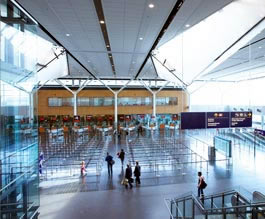
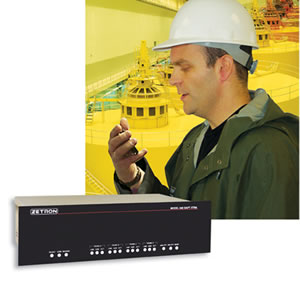 The Model 640 DAPT-XTRA Paging Terminal is a cost effective solution for small to medium-sized systems and private organizations offering a paging service based on bureau-type operator paging and/or direct telephone access. The 640 supports up to 1,500 users with up to 4 telephone lines. It also supports voice paging, voice prompts, talkback paging, and alphanumeric paging.
The Model 640 DAPT-XTRA Paging Terminal is a cost effective solution for small to medium-sized systems and private organizations offering a paging service based on bureau-type operator paging and/or direct telephone access. The 640 supports up to 1,500 users with up to 4 telephone lines. It also supports voice paging, voice prompts, talkback paging, and alphanumeric paging.  Zetron's Remote Monitoring equipment provides monitoring and notification of unusual conditions and status changes. Messages are automatically transmitted over a radio or a public address system. Notification can be sent via speaker or radio announcement, telephone, cellular phone, or paging.
Zetron's Remote Monitoring equipment provides monitoring and notification of unusual conditions and status changes. Messages are automatically transmitted over a radio or a public address system. Notification can be sent via speaker or radio announcement, telephone, cellular phone, or paging. 


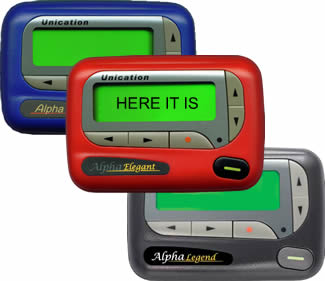
 NEW ALERT AND RINGTONE AMPLIFIER
NEW ALERT AND RINGTONE AMPLIFIER 


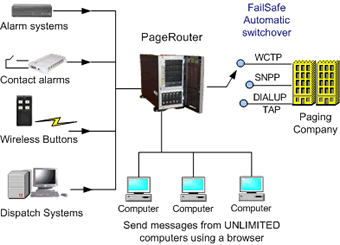



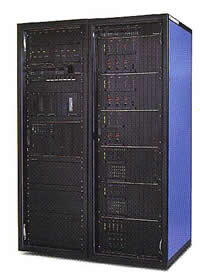

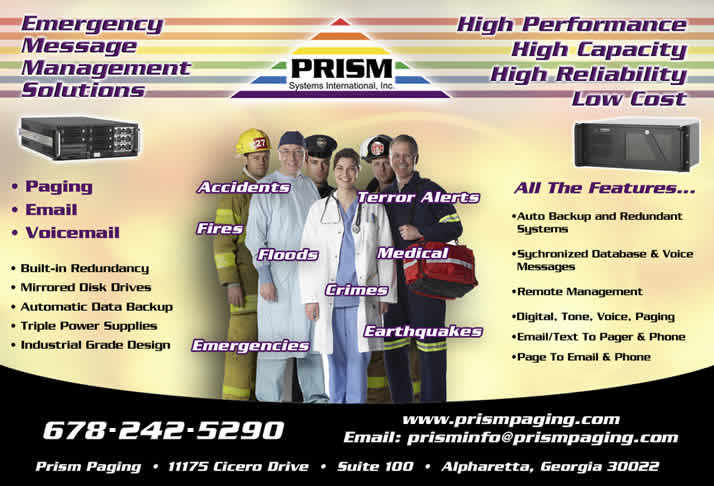
 Microsoft Vine looks like an odd social experiment. It's designed to help users send notifications to the people they need to reach in emergencies. I tried the product and found it very un-Microsoft-like. It's useless as a single-user app, and it's also oddly specific in its functionality. From Microsoft, I expect broad platforms and wide-open productivity tools. Vine is neither.
Microsoft Vine looks like an odd social experiment. It's designed to help users send notifications to the people they need to reach in emergencies. I tried the product and found it very un-Microsoft-like. It's useless as a single-user app, and it's also oddly specific in its functionality. From Microsoft, I expect broad platforms and wide-open productivity tools. Vine is neither. 